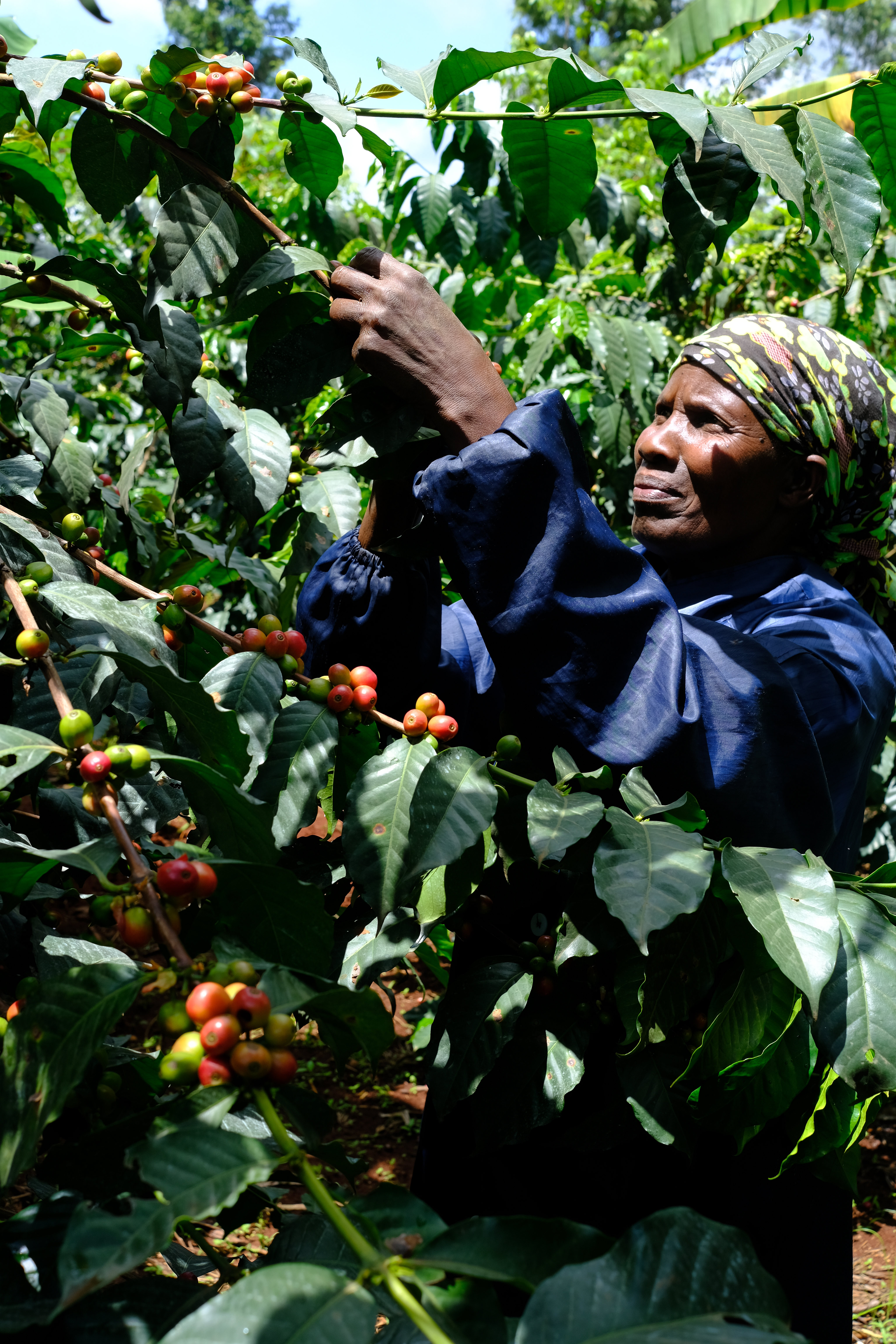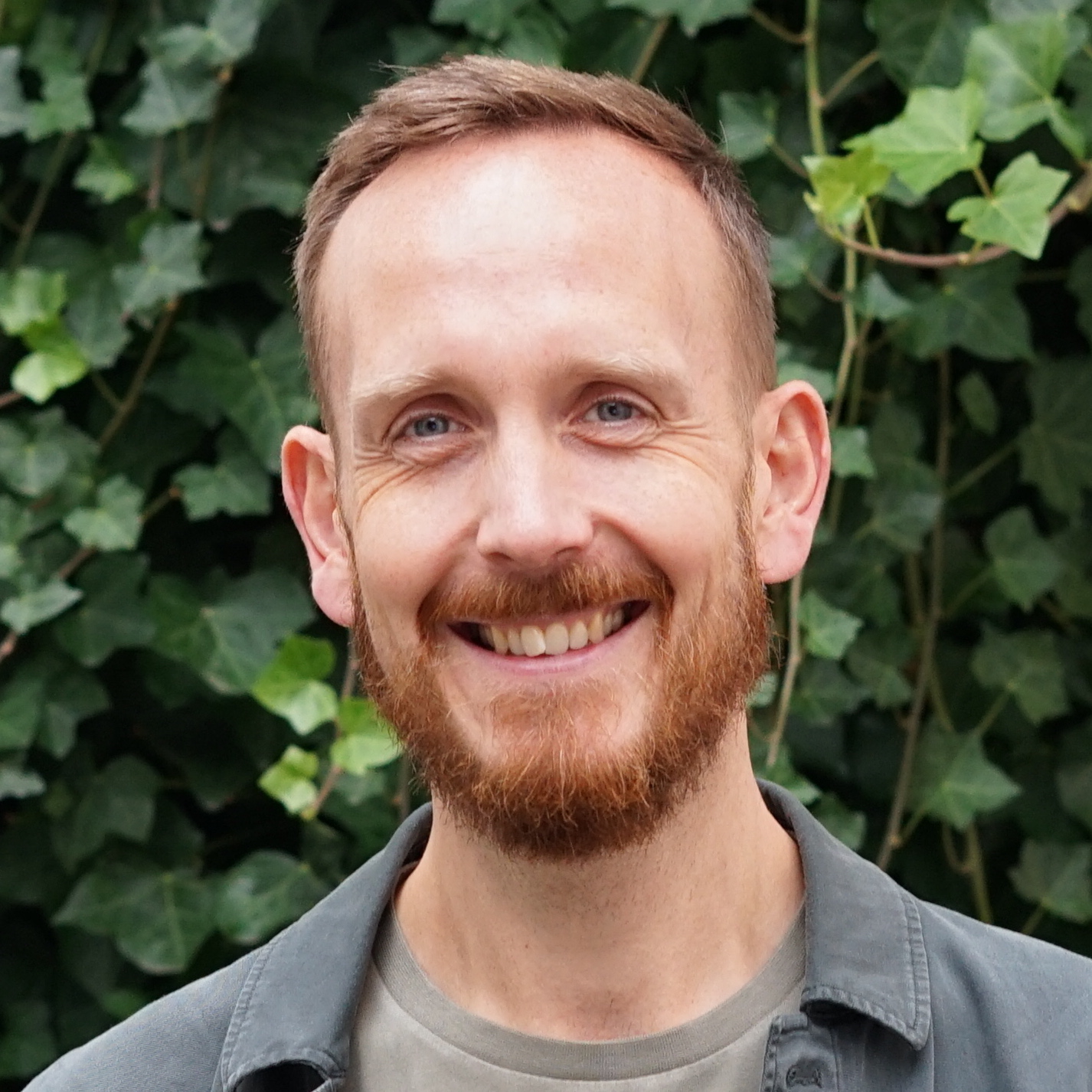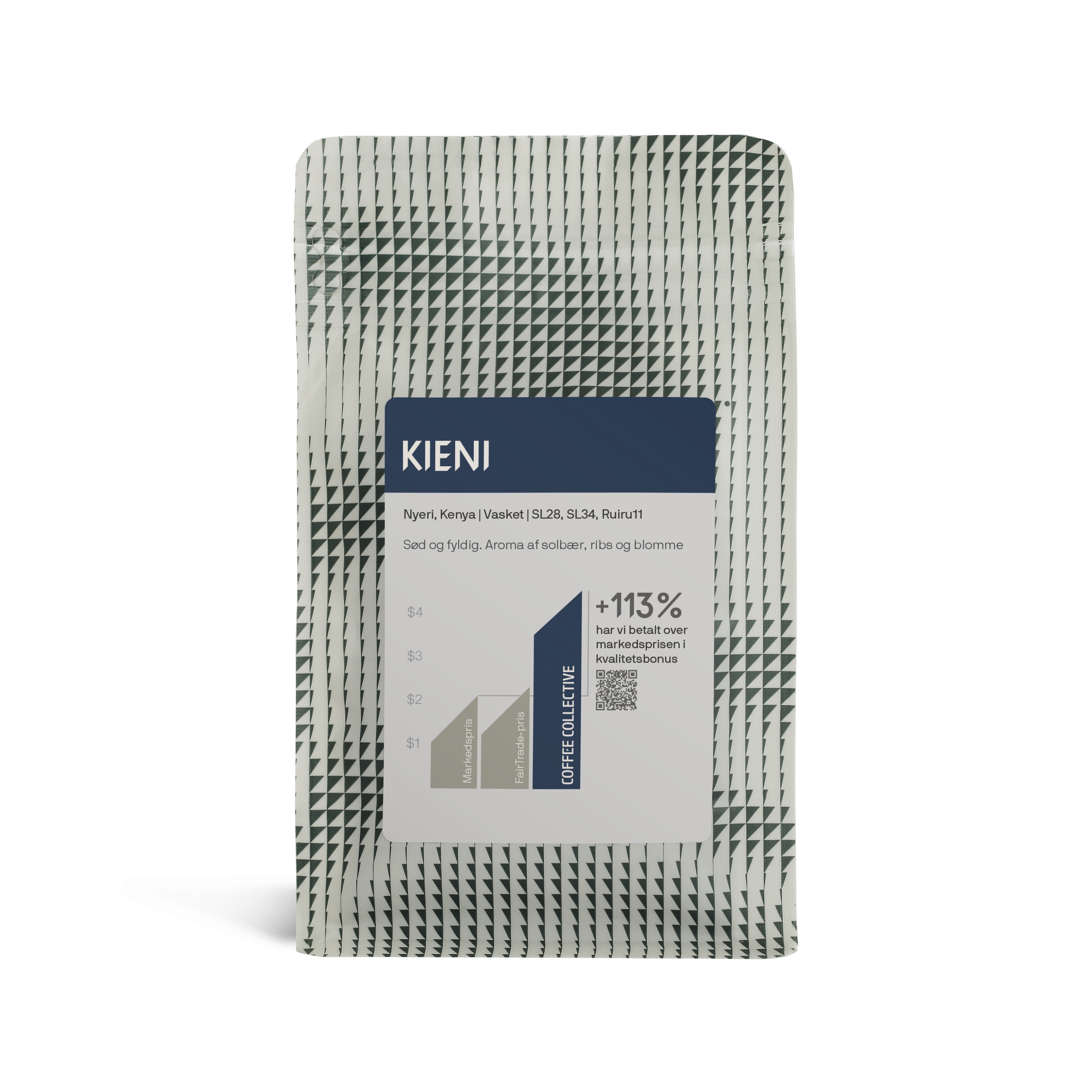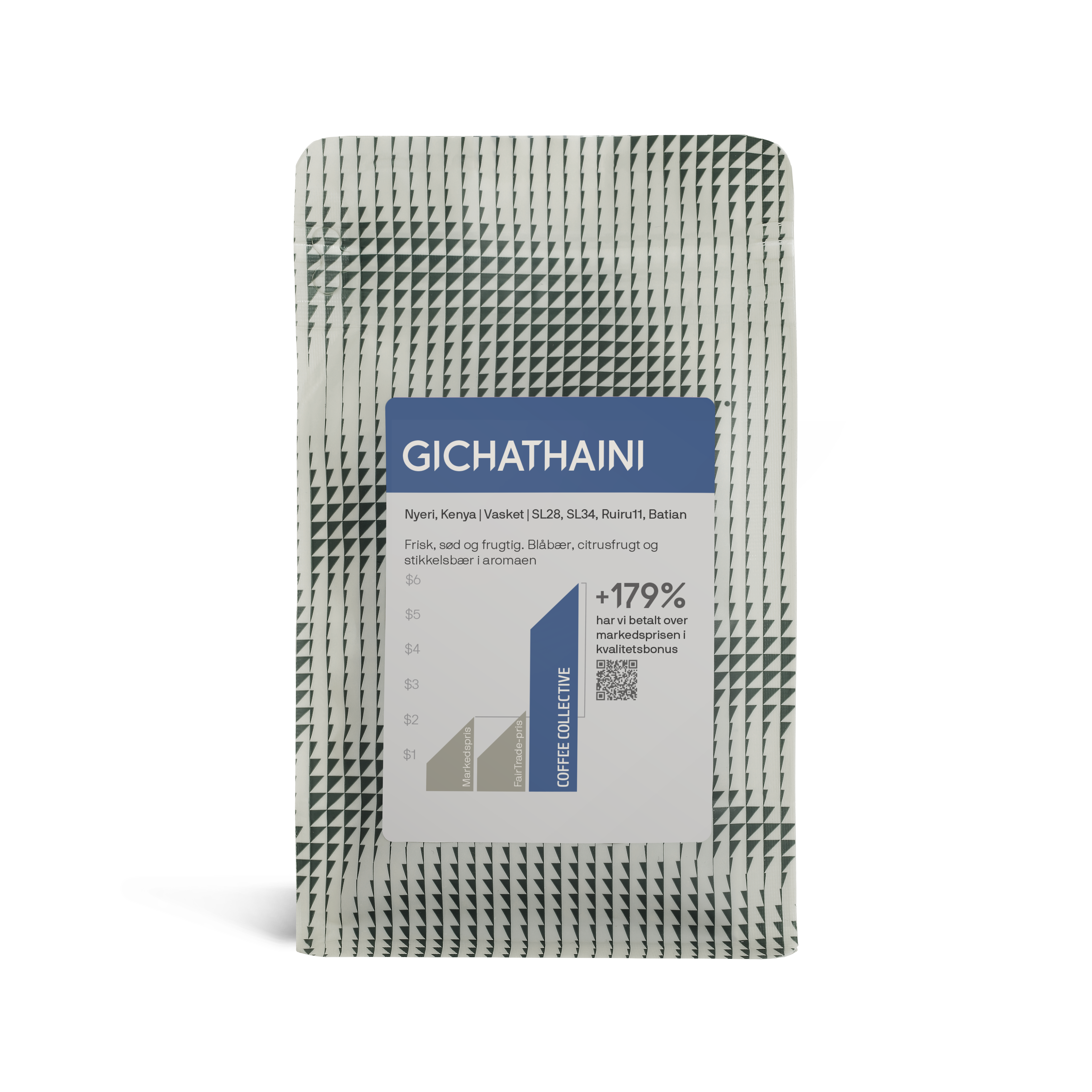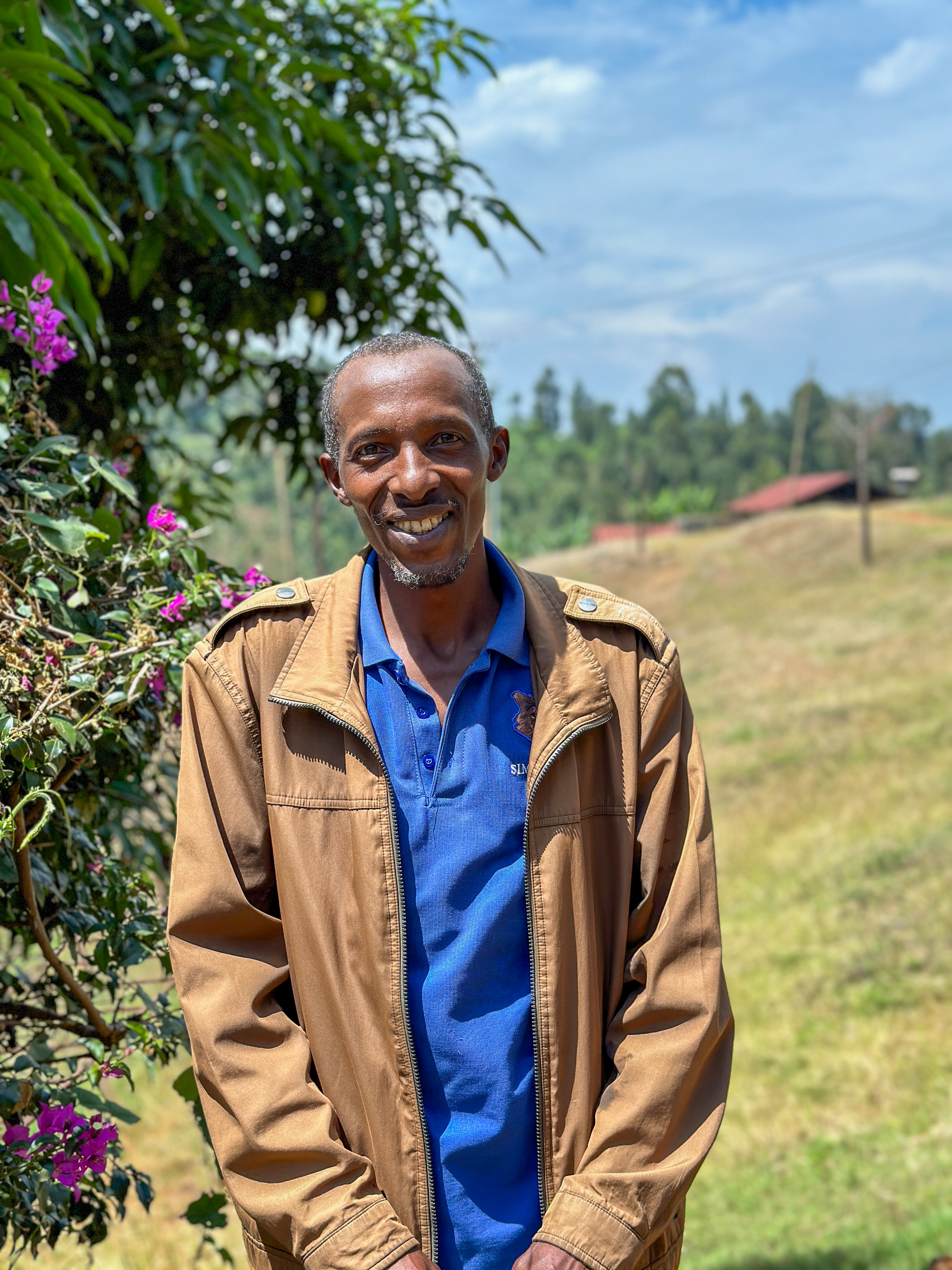As we’re launching the fresh crop of Kieni this week, I thought I’d recount a little from my trip to Kenya earlier this year when I went to taste and buy all the coffees we’ll present from that origin this season. It’s a bit of a long read, but I hope you’ll enjoy it.
This year saw a lot of changes in Kenya as new regulations came into effect. Mainly it meant that the Marketing Agents, responsible for bringing coffee to either the Nairobi Coffee Exchange or setting up direct sales, were forced to close down. Instead, there are now “brokers” performing a similar task of helping cooperatives dry mill and market their coffee. For us, it meant working more closely with Peter Githinji and his new company, Alliance Berries Ltd. We’ve known Peter for many years, as he was previously in charge of the marketing agent for Kieni, and he is also a coffee farmer who happens to deliver coffee to Kieni. In his new company, he is working with a lot of our favorite coffee factories and was also able to help us find some new gems.
The first two days in Kenya were all about cupping coffees. In general, it’s about getting an overview of what’s out there, as well as cupping through all the different outturns from Kieni. The “outturns” are basically separate lots from different weeks of the harvest, which runs from the end of October to the beginning of January. As we have a really close relationship with Kieni, fostered for many years, we get to taste all the outturns before anyone else and choose our favorites. This makes sense for Kieni, as they know we’ll pay more than anyone else for the coffee.
Our collaboration with Kieni is going into its 14th year this season. Our first purchase from them was in 2010 (from the harvest in December 2009), and we’ve been back every year since then. This long-term commitment benefits us both. Kieni is getting high, stable prices year after year, motivating farmers and allowing reinvestments into quality. We, on the other end, are allowed first picks of all their outturns, getting the highest quality and building a name around Kieni that resonates with consumers all around the world. A true win-win.
This year, Kieni got a new mill manager, Patrick Wahome. In the Mugaga cooperative society, where Kieni is one of five factories (wet mills), the board often moves the managers between the wet mills at an interval of 3-5 years, so they “don’t get stuck.” We’ve been happy that Josphat remained at Kieni for so long but also knew the change would come eventually.
For the last two years, Patrick has been the manager at the Kiamabara factory, where the Mugaga society headquarters are also located, just 10 minutes from Kieni. He’s eager to learn and happy to meet these Danish people he’s been hearing so much about. Charles Gathaiya Murimi stays on as the elected chairman of Kieni, making sure the development of quality and improved payments to the farmer members remains a priority.
Kieni is located near the town of Karatina in the east part of the Nyeri region. This is coffee heartland in Kenya, and it feels like every person there is a coffee farmer, even if they have other jobs. There are about 1,000 members who deliver coffee to the Kieni factory, and it’s consistently been one of the highest-paying factories in Kenya in the years we’ve been buying from them.
The farms are located in a beautiful hilly landscape ranging around 1,600 – 1,800 masl, and most trees were planted back in the 1950s and 60s when Kenya was still under British rule. This is why the majority of the coffee is SL28 and SL34 – the two varieties associated mostly with the strong blackcurrant flavor and high acidity that Kenya has become so praised for. Some farmers choose to stick with the old SL varieties, while others graft Ruiru 11 onto the old SL28 rootstocks or choose the newer Batian variety for new plantings.
One of the benefits of the cooperative structure is that each farmer only has to attend to his or her own trees, and usually, all the maintenance, pruning, and nurturing of the trees throughout the season is done by the farmer herself. Picking is also often the farmer and his/her family with a few helpers. They know that the price they will end up getting is very much determined by the ripeness of the cherries being picked – something that can be hard to explain to a paid day-laborer picker. Perfectly, selectively picked cherries are the first and most important step in quality sorting.
Processing at the factory is done with 4 sets of vertical disc pulpers, that remove the pulp from the seeds (beans) inside and then float in water. The best quality is called P1 (Parchment 1) and sinks to the bottom in a water sorter, while lower qualities P2 and P3 are sorted away.
Each of the three qualities is then brought to individual fermentation tanks to wild ferment overnight. The next morning, the naturally occurring microorganisms have eaten away at the sugary mucilage surrounding the parchment coffee, breaking it down while changing the flavors of the coffee and improving the acidity and floral aromas.
The remaining mucilage is then washed off, sometimes with a secondary fermentation for a few hours, in washing channels with clean water from the local river. The water is cleaned in lagoons after washing to protect the environment. The clean coffee is furthermore soaked in water for 4-18 hours, where no fermentation occurs, and then brought to the drying tables.
Drying is usually between 12-18 days on raised tables and covered during the harsh noon sun or if there’s rain. When the coffee is dried to between 10-11% moisture content, it is ready to be brought to the Dry Mill for hulling (removing the parchment), size sorting (AA, AB, PB, etc.), density sorting, electronic sorting, or hand-picking out defects, and finally vacuum packing for export.
Again this year, we’ve bought both AA and AB from Kieni, as we feel both sizes are of superb quality. The AA (larger beans) does have a bit more sweetness and aroma and fetches a higher price.
Besides Kieni, we wish to have one or two more Kenyans on the menu throughout the year, to show some different sides of this great country. We’ve been looking to other regions, but our favorites are often from Nyeri and Kirinyaga in the central area. They just have much more of a juicy character and more complexity, whereas other regions tend to be a bit one-dimensional to us.
This year, two coffees caught my attention on the cupping table. And both are from places I’m very familiar with from previous years.
Gakuyini - Thirikwa
The first is neighboring the Rungeto society in Kirinyaga, where we’ve been buying Kii, Kiangoi, and Karimikui for the past three years. It’s a cooperative society, Thirikwa, with just one factory called Gakuyini. I’ve been to visit the factory a couple of times before, as their coffees have always been great, but it’s the first time we buy from them. Cooperative chairman Mr. Kiura and treasurer Leon Kauna Njiru took me around the factory this year.
There are about 2,000 active members in the cooperative, delivering cherries from the surrounding area in the Eastern part of Kirinyaga. This year they’ve received around 1.1 million kg of cherry, which is a bit less than last year due to CBD – Coffee Berry Disease – affecting yields. It’s interesting to see they are using a Penagos Eco-pulper, which uses less water in the depulping process, but they still do an open tank fermentation and fully washing after, giving that clean, Kenyan taste profile.
The Penagos eco-pulper is apparently better for washed coffees, whereas the Pinhalense eco-pulper seen in other factories is better for the mechanical removal of the mucilage and thus not fermenting and washing after. The river Kirii runs right through the factory, where drying tables are covering most of the available area, and a staff of around 40 makes sure the coffee is dried below the required 11.5% moisture content.
Gichathaini – Gikanda
The second that really caught my attention is a very special place to me, as it was the first coffee factory I visited in Kenya during a trip in 2007 when I was actually there to judge the Kenyan Barista Championship. But it was in blind cupping that I picked it out, so it didn’t make the cut due to bias, but rather due to an amazing flavor. Although situated very close to Kieni, it’s quite a different taste profile – more citric acidity, brighter, more lively, fresher, and more red berries like red currants, gooseberries, and raspberries.
Gichathaini has been one of the most renowned cooperative factories in Kenya for many years. It’s part of the Gikanda society, which used to be comprised of Gichathaini, Kangocho, and Ndaroini until the latter went private (which is a long and not very pretty story involving a foreign importer).
This year, Gikanda opened its own Dry Mill, which is a project that has been underway for many years. The Dry Mill means they can do everything up to export level themselves, except for maybe a final electronic or hand sorting and vacuum packing. This should mean they earn more for themselves, but also that the coffee can move more quickly and not be stuck at a larger dry mill together with coffee from hundreds of other factories.
It’s an exciting development, I think, with a cooperative having its own micro-mill. The quality matched that of the larger dry mills in terms of size and density sorting, and we just had to pay another mill to get it clean (removal of defects) and vacuum packed. I’m very excited to get to present this coffee again, which we haven’t had on the menu for many years.
At the end of the trip, I also visited one of the biggest exporting warehouses I’ve ever seen. There were bags upon bags for what felt like endless rows. It reminded me of the ending of Indiana Jones and the Raiders of the Lost Ark (if you’re as old as me, that might also be one of your favorite movies).
I know this was a bit of a long read, but I hope some of you made it all the way through it and that you’ll enjoy our 2024 Kenyan selection.
— Klaus
You might also like
Related stories
Would you like to get our different coffees delivered directly to your doorstep? We've got you covered.
Address
Coffee Collective
Godthåbsvej 34B
2000 Frederiksberg
CVR: 30706595
Contact
mail@coffeecollective.dk
+45 60 15 15 25 (09.00-15.00)
Coffee and cookies
This site uses cookies.
Find out more on how we use cookies.
